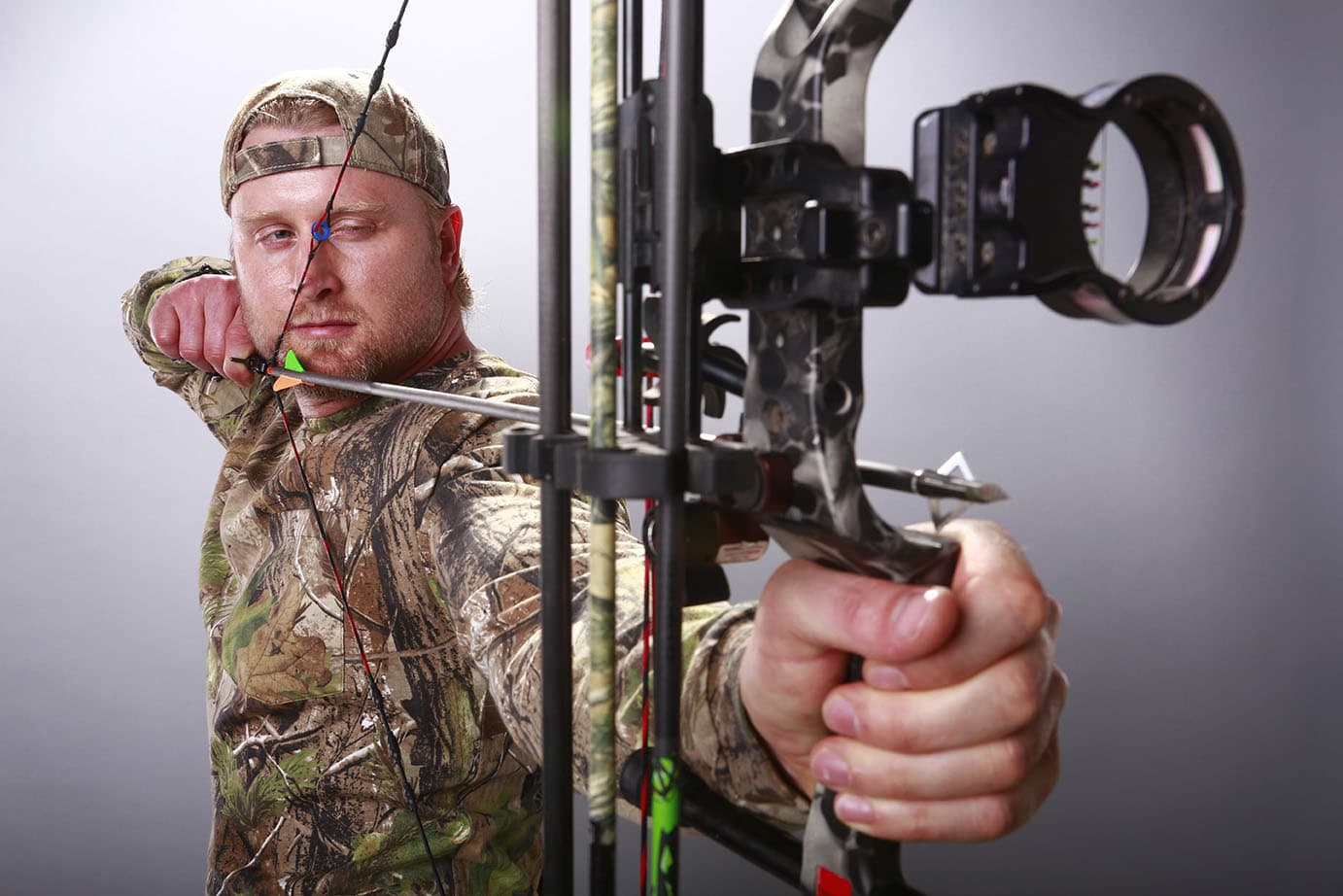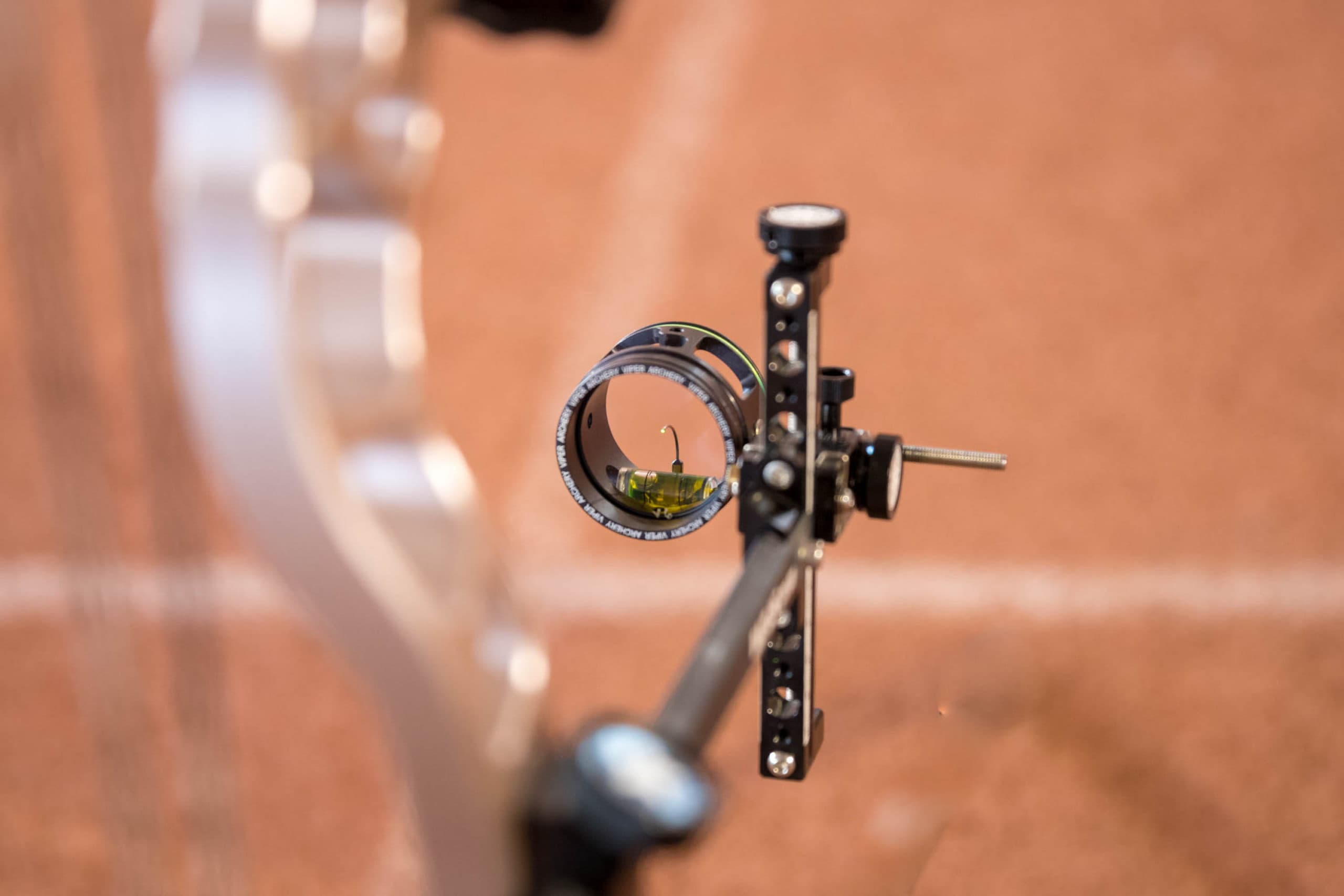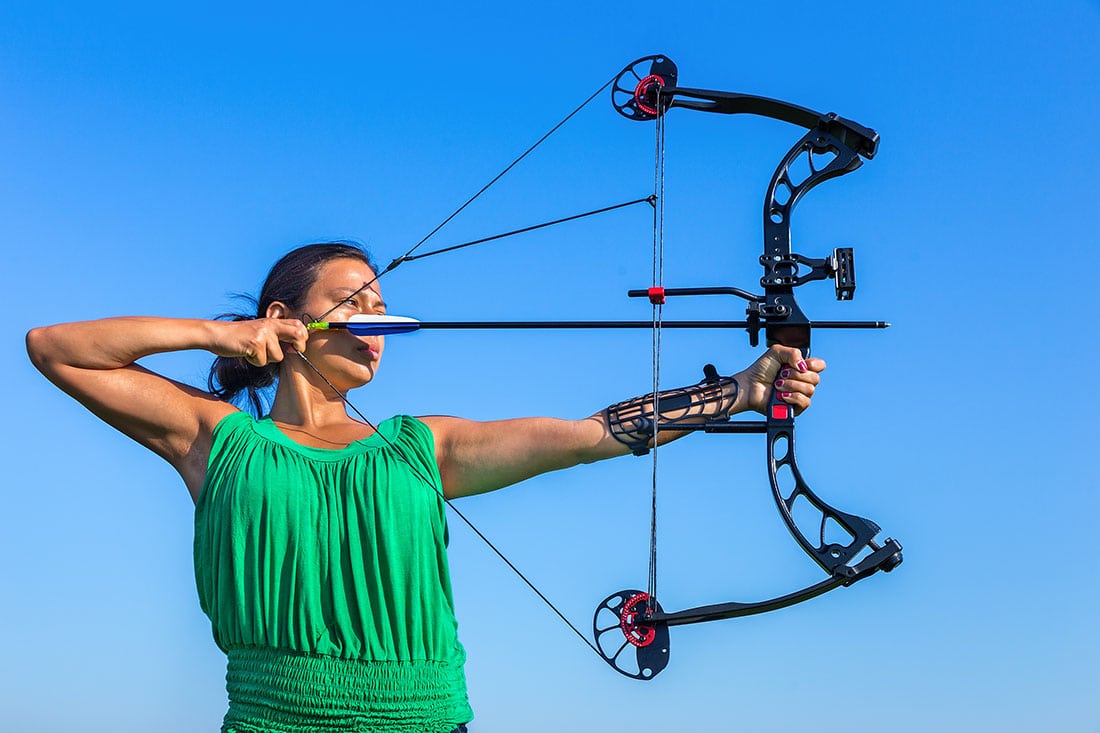How to Sight in a Bow: 7 Easy Steps
Last Updated on

It doesn’t matter if you have a multi-thousand-dollar bow or a far cheaper option. If you don’t take the time to sight it in correctly, then you’re never going to hit your target. The good news is that sighting your bow is easier than you think.
In this guide, we’ll walk you through everything that you need to know to sight in your bow and have you bulls-eying your target in no time!

Before You Start
While you might want to head out and start sighting in your bow immediately, there are a few things that you need to do beforehand to ensure that you have a frustration-free experience. We broke it all down, so make sure you give this a read before you head out!
Why You Need to Sight Your Bow
Sighting your bow is one of the most critical steps. It’s no different than sighting in a gun, and it’s just as important. If you don’t take the time to sight your bow in, then your scope is useless. You’ll never hit your target, and you might as well head home now.
Sighting in your bow takes all kinds of factors into account, including arrow drop. Sighting your bow isn’t an optional step — it’s a critical one.
What You Need
While you don’t need much to sight your bow, there are a few things that you can’t do without.
- Your bow and at least five arrows
- Whatever tools you need to adjust your scope and bow (usually an Allen wrench set)
- A target

How to Sight Your Bow
Once you’ve got everything together, it’s time to head out for the fun part. While there are plenty of horror stories about sighting scopes and bows, if you take your time and follow a comprehensive guide, there’s no reason that it can’t be an enjoyable experience.
You’re heading out to fire a few dozen shots, so what’s not to love?
1. Set Your Target and Pin
Once you get out to the range, go ahead and set up your first target. You want to sight in your closest pin first, and this is usually around 20 yards. Set up the pin to your desired location inside the sight, and set your target up 20 yards away.

2. Take Your Shots
This is the fun part: Step back and take a few shots. We recommend five shots, just to be safe. When making your shots, take extra care to use proper form. Then, go take a look at your target.
The arrows should be clustered together. If they’re not, then you don’t have a good reading to adjust off of. The reason could be a problem with your form, the arrows, or both. However, if the arrows are clustered together, you’re ready to move onto the next step.
3. Make Adjustments
You want to adjust based on the average distance from each arrow to the bullseye. You don’t need to measure each arrow individually; just measure from center mass and adjust. Remember that you will make both horizontal and vertical adjustments, so don’t make a diagonal measurement to the bullseye.
Don’t try to correct everything at once. Instead, make small adjustments. Doing so prevents you from overcorrecting and can save you a ton of frustration.
4. Take More Shots
Once you’ve made your adjustments, take your arrows and head back to the shooter’s block. Take your shots again, and make sure that you get another cluster. Once you have all five arrows clustered together, you can start making more adjustments.

5. Finalize Adjustments
Once you take your shots and have your arrows clustered around the bullseye, you can lock in your 20-yard pin. You’re done with this part and you can move onto the next pin.
6. Set Up Your Next Pin and Target
Now that you’ve set your first pin, you can move onto the next one. If you’re using a three-pin setup we recommend 30 yards, but there’s no wrong answer here. It’s all up to you and what you prefer when setting up your sights. Set the pin, and move the target to the appropriate distance out.
7. Wash, Rinse, and Repeat
Once you set up the next pin, take your shots and adjust. You’ll do this for each pin until you’ve sighted in each pin in your sight. The more pins your sight has, the longer it’s going to take, but make sure to sight in each pin. Otherwise, you won’t be able to use that pin effectively.

Final Points
While some people dread sighting in their bow, there’s no reason that you can’t enjoy spending a day out at the range. The key is to take your time and make small adjustments. Things won’t get frustrating unless you’re going back and forth because you keep jumping over the bullseye.
Finally, if you’re having trouble getting clustered shots, reevaluate your form and your arrows. If your arrows check out — and they’re all the same make and size — the problem lies with you. Get a second opinion about how you’re shooting if you can’t figure out what you’re doing wrong.
Featured Image Credit: REDAV, Shutterstock
About the Author Robert Sparks
Robert’s obsession with all things optical started early in life, when his optician father would bring home prototypes for Robert to play with. Nowadays, Robert is dedicated to helping others find the right optics for their needs. His hobbies include astronomy, astrophysics, and model building. Originally from Newark, NJ, he resides in Santa Fe, New Mexico, where the nighttime skies are filled with glittering stars.
Related Articles:
How to Clean a Refractor Telescope: Step-by-Step Guide
How to Clean a Telescope Eyepiece: Step-by-Step Guide
How to Clean a Rifle Scope: 8 Expert Tips
Monocular vs Telescope: Differences Explained (With Pictures)
What Is a Monocular Used For? 8 Common Functions
How to Clean a Telescope Mirror: 8 Expert Tips
Brightfield vs Phase Contrast Microscopy: The Differences Explained
SkyCamHD Drone Review: Pros, Cons, FAQ, & Verdict
